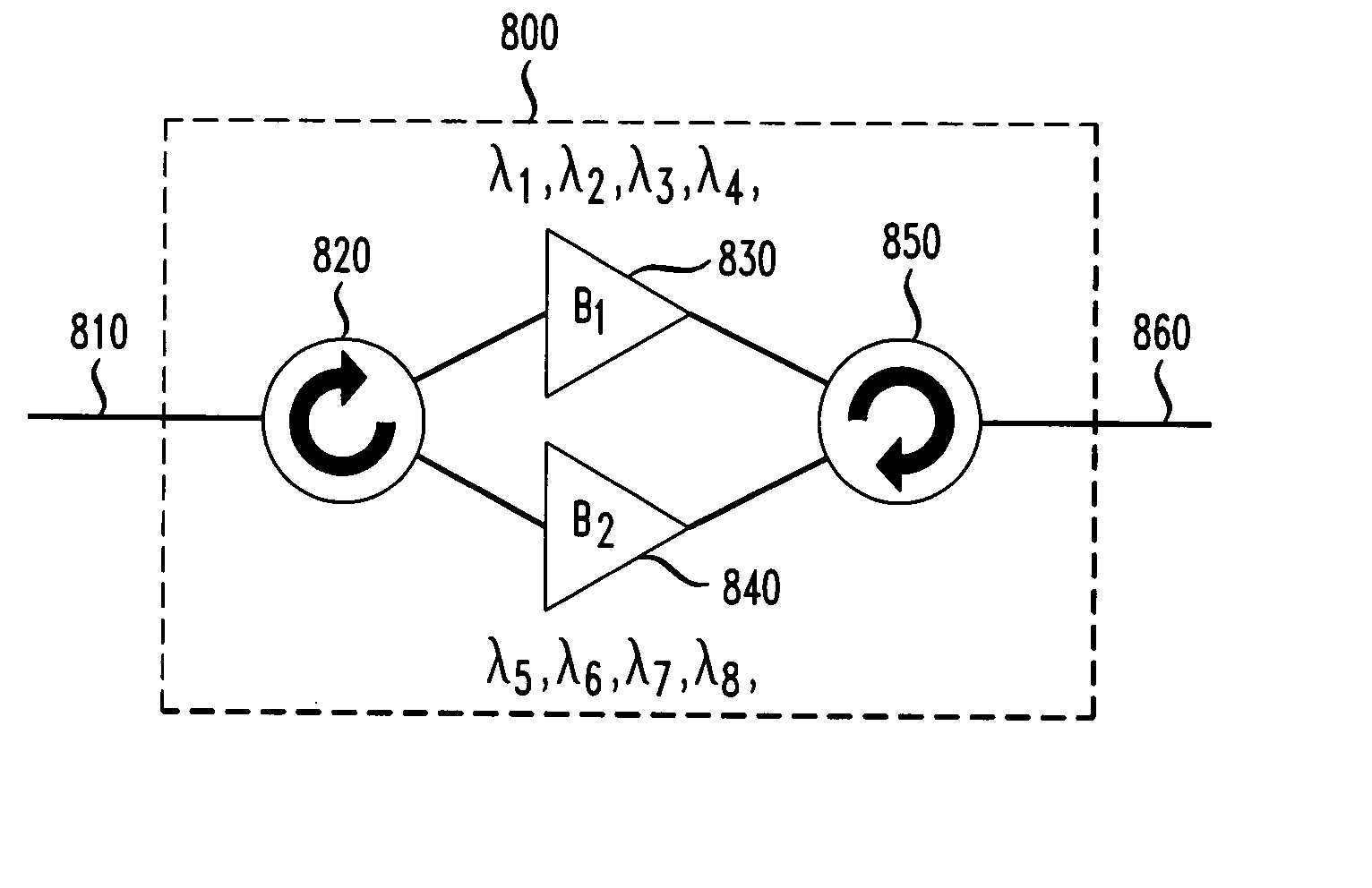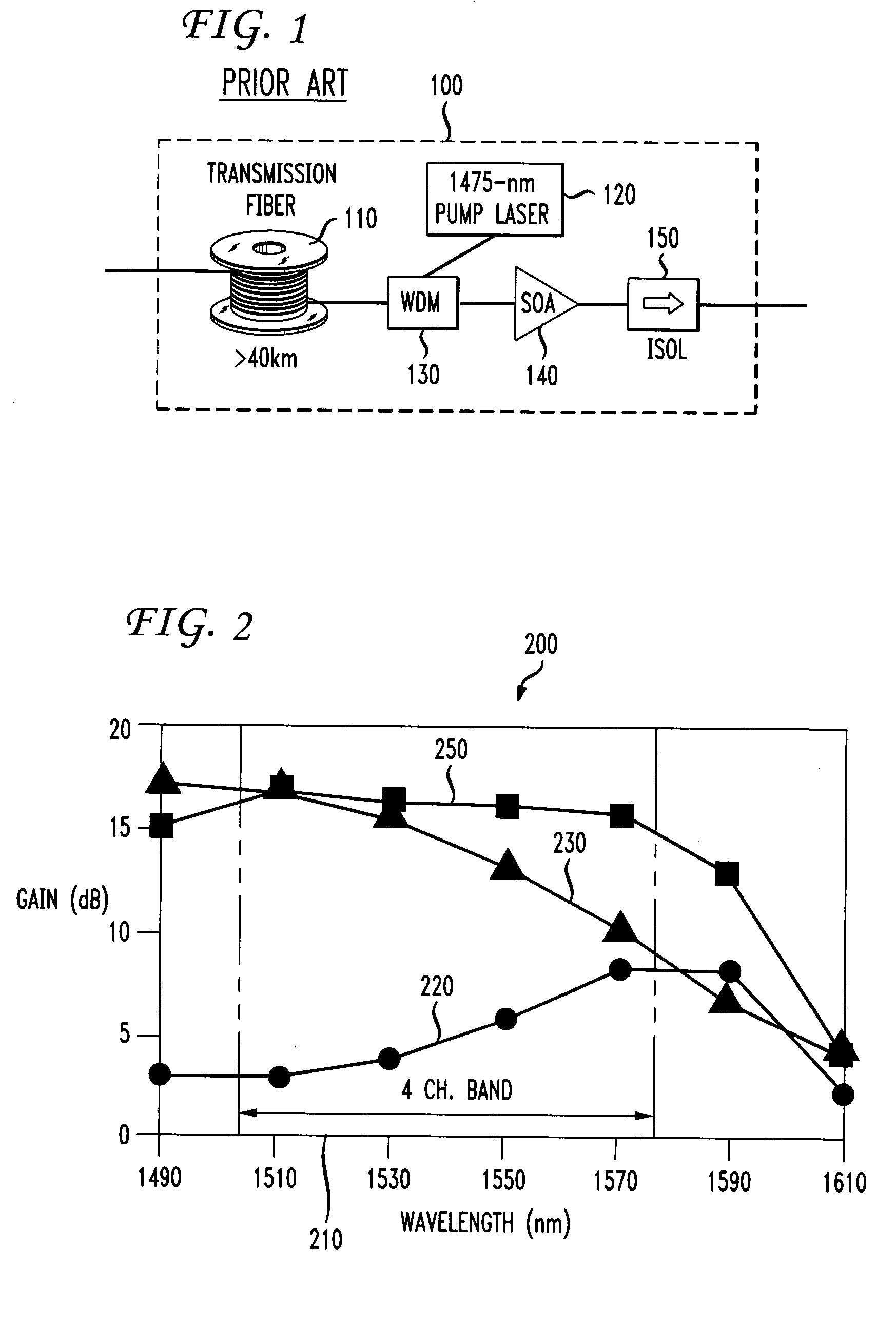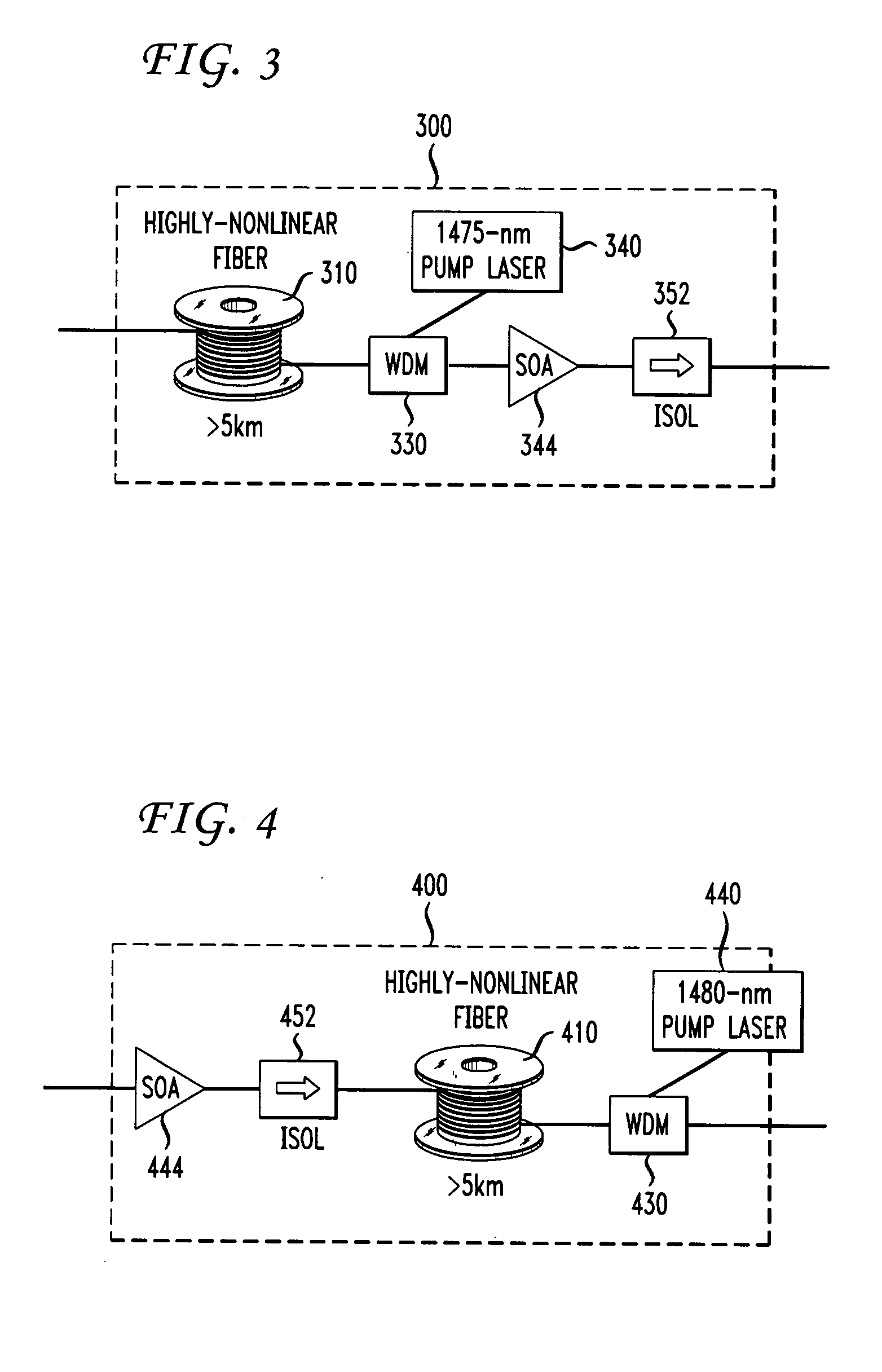Multiband amplifier based on discrete SOA-Raman amplifiers
a multi-band amplifier and amplifier technology, applied in the direction of semiconductor amplifier structure, multi-component communication, wavelength-division multiplex system, etc., can solve the problem of not being able to achieve commercial acceptance, failing to gain acceptance as a viable wdm amplifier, and more difficult to produce amplifiers with low polarization-dependent gain
- Summary
- Abstract
- Description
- Claims
- Application Information
AI Technical Summary
Benefits of technology
Problems solved by technology
Method used
Image
Examples
Embodiment Construction
[0043] The inventors have developed a low cost discrete hybrid SOA-Raman amplifier capable of simultaneously amplifying multiple WDM channels over a broad optical band (up to ˜80 nm) with a center wavelength that can be specified (with the proper choice of Raman pump wavelength and SOA) over the entire low-loss band in optical fiber (˜1300-1600 nm). The commercial availability of such an amplifier could open the door to far more flexible and efficient optical networks, particularly in the metro and access portions of the network where flexibility and low cost are paramount.
[0044] A potential drawback of the distributed hybrid amplifier described above is the fact that the Raman gain occurs along the transmission fiber. To that point, service providers have been reluctant to deploy distributed Raman amplifiers for several reasons:
[0045] 1) The overall Raman gain is dependent on the type, batch, and manufacturer of the transmission fiber as well as any additional losses or reflectio...
PUM
| Property | Measurement | Unit |
|---|---|---|
| length | aaaaa | aaaaa |
| length | aaaaa | aaaaa |
| wavelength | aaaaa | aaaaa |
Abstract
Description
Claims
Application Information
 Login to View More
Login to View More - R&D
- Intellectual Property
- Life Sciences
- Materials
- Tech Scout
- Unparalleled Data Quality
- Higher Quality Content
- 60% Fewer Hallucinations
Browse by: Latest US Patents, China's latest patents, Technical Efficacy Thesaurus, Application Domain, Technology Topic, Popular Technical Reports.
© 2025 PatSnap. All rights reserved.Legal|Privacy policy|Modern Slavery Act Transparency Statement|Sitemap|About US| Contact US: help@patsnap.com



